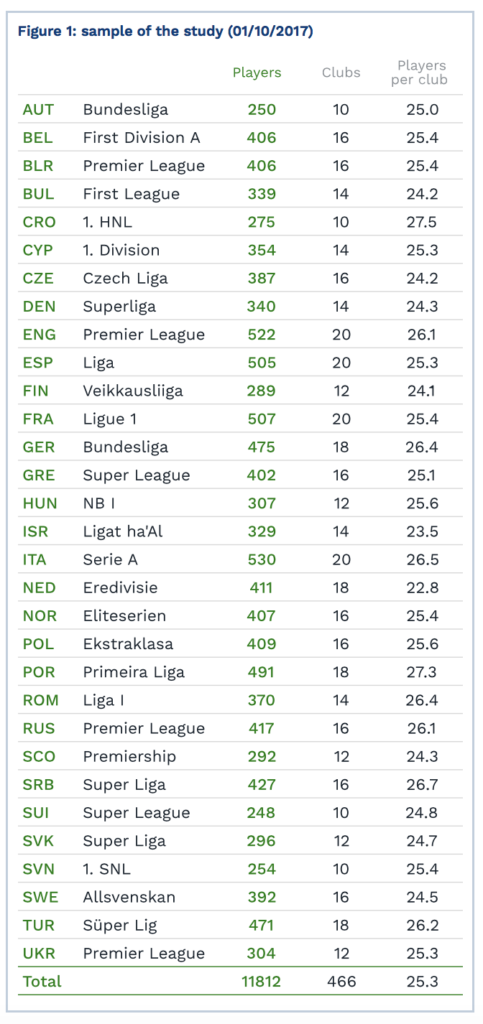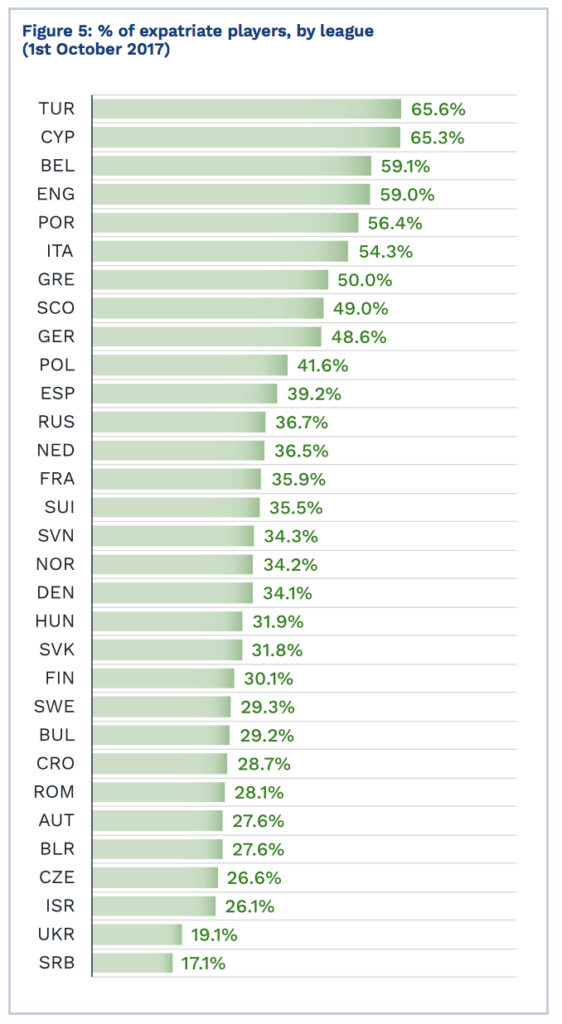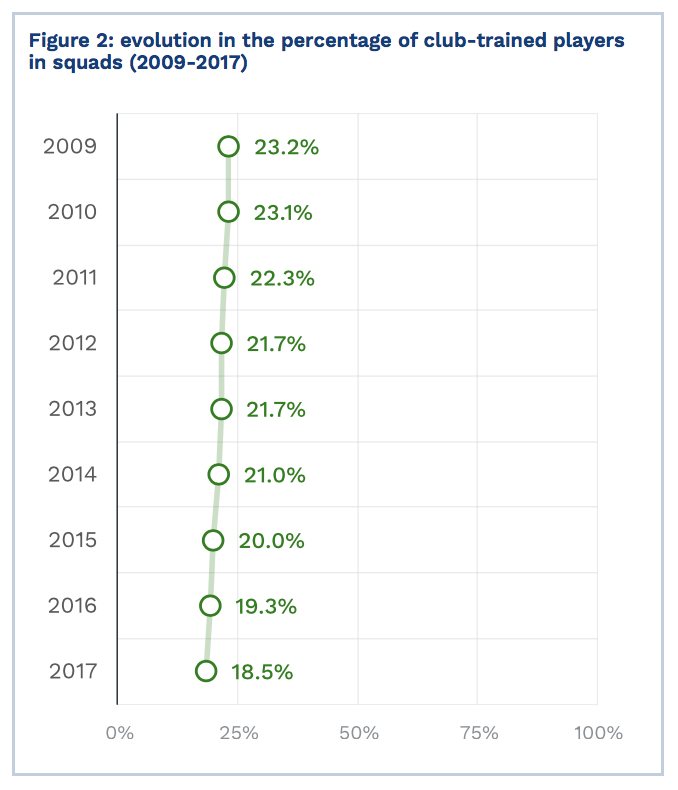By Mark Baber
November 1 – Across the top Europe leagues, club trained players have hit a new low, with only 18.5% of players trained by the club they are currently with, expatriate players are at a new high of 39.7% and the percentage of new signings in each squad has hit a new high of 44.8%.
The new figures are revealed in November’s CIES Football Observatory Monthly Report which is given over to the results of a demographic study of 466 teams participating in 31 top division leagues of UEFA member associations from 2009-2017.
Club-trained players are defined as those having spent at least three years between the ages of 15 and 21 in their employer team and the proportion of these players in the squads analysed has now gone down to 18.5% from 23.2% in 2009. CIES claim this is the “eighth year of consecutive decrease,” which is not quite correct as the percentage remained constant for 2012 and 2013, but a graphic showing evolution in the percentage of club-trained players shows a general decline in the percentage of club-trained players. The rate of decrease has declined in the last two years, but whether this is significant is difficult to determine as the general trend is uneven.
Another graphic issued by CIES shows the percentage of club-trained players by league:
As CIES correctly say, only in the Slovakian top division do club-trained players still account for over one-third of squad members.
Looking at expatriate players (those who have grown up outside of the national association of their employer club and having moved abroad for football-related reasons) CIES finds “the proportion of expatriates in squads has increased steadily: from 34.7% in 2009 to a new record high of 39.7% in 2017.”
CIES characterise the increase as having “accelerated over the past two years: +1.1% per year since 2015 as opposed to about 0.5% per year for the six previous years.”
Looking at the percentage of expatriates by league, is interesting that despite EU policies designed to facilitate mobility of labour, the highest percentages of expatriates are in Turkey which is outside the EU.
Finally CIES looked at the percentage of players recruited by their employer club during the year of reference in order to measure stability of teams. Again we see an increase in the percentage of new signings illustrating the increasing mobility of the player’s labour market.
It is worth noting, when we look at the percentage of new signings by country, the most stable squads were those in the German Bundesliga (30.9%) and the English Premier League (33.3%).
The CIES figures show that there has been a general increase in the mobility of players in the footballers’ labour market and this is reflected in a drop in the number of club-trained players. The figures also show a growing internationalisation of the European footballers’ labour market. These trends seem likely to continue, manifesting themselves in both EU and non-EU countries and it seems unlikely Brexit, let alone any initiatives by the football authorities, will hold back the tide of globalisation.
See the full report at http://www.football-observatory.com/IMG/sites/mr/mr29/en/
Contact the writer of this story at moc.l1714181217labto1714181217ofdlr1714181217owedi1714181217sni@r1714181217ebab.1714181217kram1714181217




